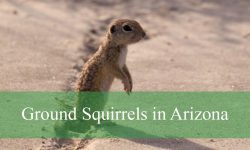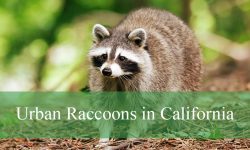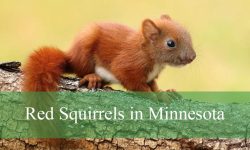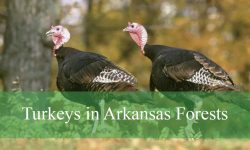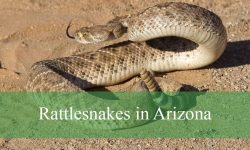Florida’s landscape is famous for its tropical beauty—sun-drenched beaches, lush greenery, and of course, towering palm trees that sway gently in the coastal breeze. But if you look closely, you might spot something unexpected in those fronds: squirrels. High above the ground, these agile rodents build intricate nests among the palm leaves, creating cozy homes that seem almost out of place in such lofty locations.
Why do squirrels in Florida nest high in palm trees? The answer lies in a combination of survival instincts, environmental adaptations, and the unique ecology of the Sunshine State. In this detailed, SEO-optimized guide, we’ll uncover the fascinating reasons behind this behavior, exploring how Florida’s squirrels use palm trees for safety, shelter, and survival—and what this means for homeowners, nature lovers, and urban wildlife management.
Meet Florida’s Tree-Dwelling Squirrels
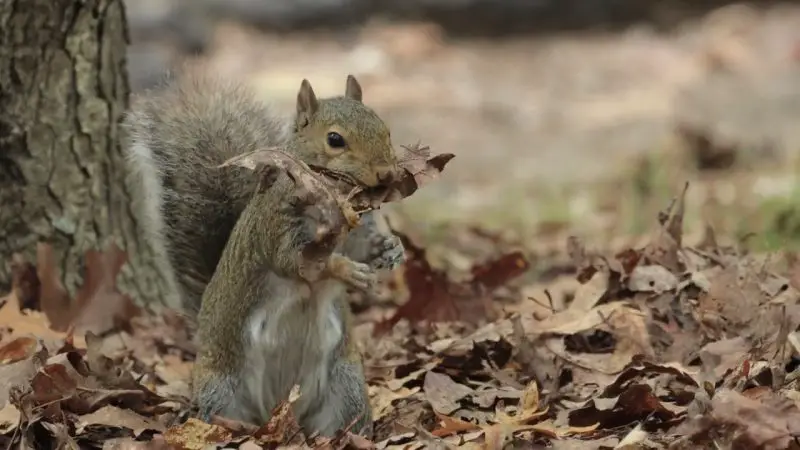
The Common Squirrel Species in Florida
Florida is home to several squirrel species, but the ones most commonly seen nesting in palm trees are:
- Eastern Gray Squirrel (Sciurus carolinensis) – The most widespread squirrel in Florida, known for its gray fur, white belly, and bushy tail.
- Fox Squirrel (Sciurus niger) – Larger and more colorful, often with reddish or black coats, these squirrels prefer open pine forests and palm groves.
- Southern Flying Squirrel (Glaucomys volans) – A nocturnal species that glides from tree to tree, less often seen but also known to use palm cavities for nesting.
Among these, the Eastern Gray Squirrel is the most frequent palm tree resident in Florida’s cities, suburbs, and coastal areas.
Adapted for Life in the Tropics
Unlike their northern relatives that face cold winters, Florida’s squirrels live in a humid, warm environment year-round. The state’s mix of urban areas, pine flatwoods, and palm-covered yards provides ideal conditions for squirrels to thrive. They don’t hibernate—instead, they remain active throughout all seasons, constantly foraging, nesting, and raising young.
Palm trees, abundant across the state, have become their favorite nesting locations—offering both comfort and security from Florida’s diverse range of predators.
The Importance of Nests (Dreys)
What Is a Drey?
A squirrel’s nest, called a drey, is typically made of twigs, moss, leaves, and shredded bark. These nests are often built high in trees, tucked into forked branches or dense foliage. Dreys serve as multi-purpose shelters: they protect squirrels from rain, heat, wind, and predators, while also providing a safe place to raise young.
Why Palm Trees Make Perfect Nesting Sites
Florida’s palms—such as sabal palms, coconut palms, and royal palms—offer structural and environmental benefits that few other trees provide:
- High vantage point: Elevation keeps squirrels safe from ground predators like snakes, raccoons, and domestic cats.
- Dense fronds: The thick, fan-like leaves create natural cover from the sun and rain.
- Warm microclimate: Palm crowns stay warmer than lower branches, ideal for Florida’s occasional cool spells.
- Proximity to food: Palms often grow near fruit trees, parks, and gardens, giving squirrels easy access to food sources.
The combination of safety, warmth, and proximity to resources makes palm trees prime real estate for Florida’s clever squirrels.
Survival Strategy: Safety Above All
Escaping Predators
In Florida’s diverse ecosystem, squirrels face a range of predators—from hawks, owls, and snakes to raccoons, foxes, and even alligators in wetland areas. Nesting high in palm trees significantly reduces the risk of predation. Most ground predators can’t climb palms due to their smooth trunks, while aerial predators find it difficult to reach nests hidden among thick fronds.
For squirrels, height equals safety—and palm trees offer the perfect refuge.
Flood and Storm Protection
Florida’s climate brings frequent rainstorms and occasional hurricanes. Nesting high allows squirrels to stay dry and avoid rising water during floods. Even though strong winds can threaten palm nests, squirrels are surprisingly good engineers. They anchor their dreys tightly into crevices, fronds, or old bird nests, often rebuilding quickly after storms.
Avoiding Human Disturbance
Urbanization is another reason squirrels choose palm trees. In residential neighborhoods, palms often line streets or backyards, providing accessible yet undisturbed nesting spots. High nests keep them away from humans, pets, and traffic while still allowing easy travel between trees and rooftops for foraging.
Palm Trees: Nature’s High-Rise Apartments
Structural Advantages
Palm trees differ significantly from oaks or maples. Instead of wide branches, they have a single vertical trunk topped with a crown of dense, fibrous leaves. This structure allows squirrels to wedge nests securely among the bases of fronds—creating a natural cup-shaped nook protected from above.
In addition, older palms often develop cavities or decayed frond bases that make excellent nest hollows. Flying squirrels, in particular, prefer these enclosed spaces over exposed dreys.
Thermal Regulation
The top of a palm tree provides excellent temperature regulation. During hot days, fronds create shade that blocks direct sunlight. At night, trapped air within the crown helps insulate the nest, keeping it warmer than the open air. This natural temperature control is crucial for young squirrels, which are vulnerable to heat and cold stress.
Reduced Parasite Exposure
Because palm crowns are elevated and receive ample air circulation, they tend to host fewer ground-dwelling parasites like fleas or mites. For squirrels, this makes palms a healthier nesting option compared to lower tree cavities or ground burrows.
Food Sources Near Palm Trees
Coconut and Palm Fruit Opportunities
While squirrels don’t typically eat the fibrous fruit of most palms, they benefit from the ecosystems surrounding palm groves. Palms often grow near fruit trees like mango, avocado, or citrus—favorites of urban squirrels. They also provide vantage points for spotting fallen nuts or seeds on the ground.
In coastal areas, squirrels have been seen gnawing on coconut husks or drinking from cracked fruits for moisture—an ingenious adaptation during dry spells.
City Buffets and Natural Foraging
Urban Florida offers a year-round feast: birdseed from feeders, acorns from live oaks, garden vegetables, and even scraps from outdoor dining spots. Palm trees serve as convenient perches for observing and planning raids on these plentiful food sources.
Squirrels also forage for mushrooms, insects, and tree bark—using their palms as safe storage bases for short-term caching.
How Squirrels Build Nests in Palm Trees
Step 1: Selecting the Site
A female squirrel carefully inspects palm crowns for stability and cover. She avoids fronds that are too open or unstable and prefers areas shielded from direct rain or sun.
Step 2: Gathering Materials
Using her sharp teeth, she strips twigs, leaves, moss, and fibers from nearby vegetation. Palm fibers, often shed from old fronds, make ideal nest material due to their durability and flexibility.
Step 3: Constructing the Drey
She starts with a sturdy base of twigs, then weaves layers of leaves and bark into a dome-shaped structure. The inside is lined with soft materials like moss, grass, or shredded palm fiber. The resulting nest is waterproof, wind-resistant, and well-camouflaged among the fronds.
Step 4: Maintenance and Repair
Squirrels maintain their nests year-round. They patch holes after storms, replace wet materials, and sometimes build secondary nests nearby for backup or resting.
The Role of Palm Tree Nests in Reproduction
Breeding Seasons in Florida
Florida’s warm climate allows squirrels to breed twice per year—typically from December to February and again from May to July. Nesting in palm trees provides an ideal environment for raising young during both cycles. The elevated location keeps litters safe from most predators and provides a consistent, warm microclimate for growth.
Raising the Young
Baby squirrels, called kits, are born blind and hairless. They remain in the palm nest for six to eight weeks, during which the mother provides warmth and milk. She defends the nest fiercely, often moving her young to a secondary drey if threatened.
By 10 to 12 weeks, the kits begin venturing out—learning to climb, balance, and forage under their mother’s watchful eye.
Palm Trees and Urban Ecology
A Symbol of Coexistence
Palm trees have become icons of Florida’s cities, and so have the squirrels that inhabit them. Their coexistence represents the adaptability of wildlife in human-dominated landscapes. In urban ecosystems like Miami or Tampa, palm-dwelling squirrels serve as a bridge between nature and city life—living proof that wild creatures can thrive amid concrete jungles.
The Backyard Connection
Homeowners often notice squirrel activity around palm trees, especially during early morning or dusk. While some find it charming, others worry about potential damage. Squirrels rarely harm healthy palms, though they may chew fibers or fronds for nesting materials. The best approach is to admire them from afar and secure nearby food sources to discourage overpopulation.
Common Myths About Squirrels and Palm Trees
Myth 1: Squirrels Damage Palm Trees
Reality: Squirrels don’t typically harm palm trees. They use existing frond bases and loose fibers to build nests but don’t strip bark or sap the tree.
Myth 2: Squirrels Only Nest in Palms
Reality: While palms are favored, squirrels also nest in live oaks, pines, and man-made structures. Palms simply offer optimal safety in Florida’s landscape.
Myth 3: Palm Tree Nests Are Birds’ Nests
Reality: Many homeowners mistake squirrel dreys for bird nests. Squirrel nests are larger, bulkier, and often built deeper within frond clusters for concealment.
How Climate Change Is Affecting Nesting Behavior
Warmer Winters and Early Breeding
Rising temperatures in Florida are extending breeding seasons. Squirrels are nesting earlier in the year and raising more litters annually, leading to growing populations in urban areas.
Stronger Storms and Nest Loss
Hurricanes and tropical storms pose increasing threats to palm nests. While squirrels are resilient, frequent rebuilding drains energy and resources. Researchers have noticed shifts toward more sheltered nesting sites during storm-heavy years.
Changing Vegetation Patterns
As climate change alters tree distribution, palms may expand farther north, giving squirrels new nesting opportunities beyond traditional tropical zones.
Tips for Homeowners and Wildlife Enthusiasts
Observing Without Disturbing
If you spot a squirrel nest in your palm tree, avoid disturbing it—especially during breeding season. Watch from a distance with binoculars to enjoy their playful antics.
Protecting Your Property
To prevent squirrels from nesting in unwanted areas:
- Trim dead palm fronds to reduce nesting sites.
- Avoid leaving pet food or birdseed accessible.
- Use squirrel-proof feeders or metal guards on poles.
- Seal attic vents and openings if squirrels are nearby.
Supporting Local Wildlife
Planting native trees and providing natural food sources (like oaks and berry bushes) can help balance squirrel activity and reduce conflicts with homeowners.
Ecological Role of Squirrels in Florida
Squirrels aren’t just energetic climbers—they play important ecological roles in Florida’s environment:
- Seed dispersal: By burying nuts and seeds, they help regenerate forests and green spaces.
- Predator-prey balance: They serve as prey for hawks, owls, and snakes, maintaining food web stability.
- Indicator species: Healthy squirrel populations signal robust urban biodiversity.
Their nesting in palm trees highlights how wildlife continues to adapt ingeniously to human-altered landscapes.
FAQs About Squirrels and Palm Tree Nesting in Florida
Why do squirrels choose palm trees over other trees?
Palm trees provide high, secure locations that protect squirrels from predators, floods, and human disturbance. Their dense fronds also offer shade and warmth.
Do palm tree nests mean infestation?
No. Squirrel nests are part of normal wildlife behavior. As long as they remain outside and not inside homes, they pose little risk.
How can I tell if there’s a squirrel nest in my palm?
Look for a large, round bundle of twigs and leaves tucked within the fronds, often visible from below. You may also hear rustling or see squirrels climbing frequently.
Are squirrel nests reused?
Yes. Squirrels often reuse and refurbish old nests, especially in palm trees where frond bases stay sturdy for years.
Can squirrels damage my roof or attic?
They can if they find easy access routes from palm trees to rooftops. Trimming overhanging fronds and sealing vents prevents such issues.
Do flying squirrels nest in palms too?
Occasionally. Flying squirrels prefer tree cavities but may use palm hollows, especially in older or decayed trees.
Are squirrels active all year in Florida?
Yes. Unlike northern squirrels, Florida’s warm climate allows year-round activity, including nesting and breeding.
What happens to nests during hurricanes?
Strong winds may destroy nests, but squirrels quickly rebuild—often within days—showing remarkable resilience and adaptability.
Do squirrels interact with birds in palm trees?
Yes, sometimes. They may compete for nesting space or steal materials, but direct conflict is rare.
Is it illegal to remove a squirrel nest?
In Florida, it’s illegal to harm or relocate wildlife without a permit. Always consult licensed wildlife removal services if necessary.
Final Thoughts
The sight of a squirrel nestled high in a Florida palm tree is more than just a charming image—it’s a testament to nature’s adaptability. These agile rodents have learned to turn the state’s iconic palms into fortresses of safety, warmth, and family life.
Their nests reflect centuries of evolutionary ingenuity: balancing risk and reward in a world full of predators, storms, and human activity. As Florida continues to urbanize, squirrels’ ability to adapt ensures their place in the state’s ecological fabric—one palm crown at a time.
So next time you walk beneath a swaying palm and hear the rustle of tiny feet above, remember: you’re witnessing one of Florida’s most resourceful residents—the squirrel, master architect of the treetop world.

